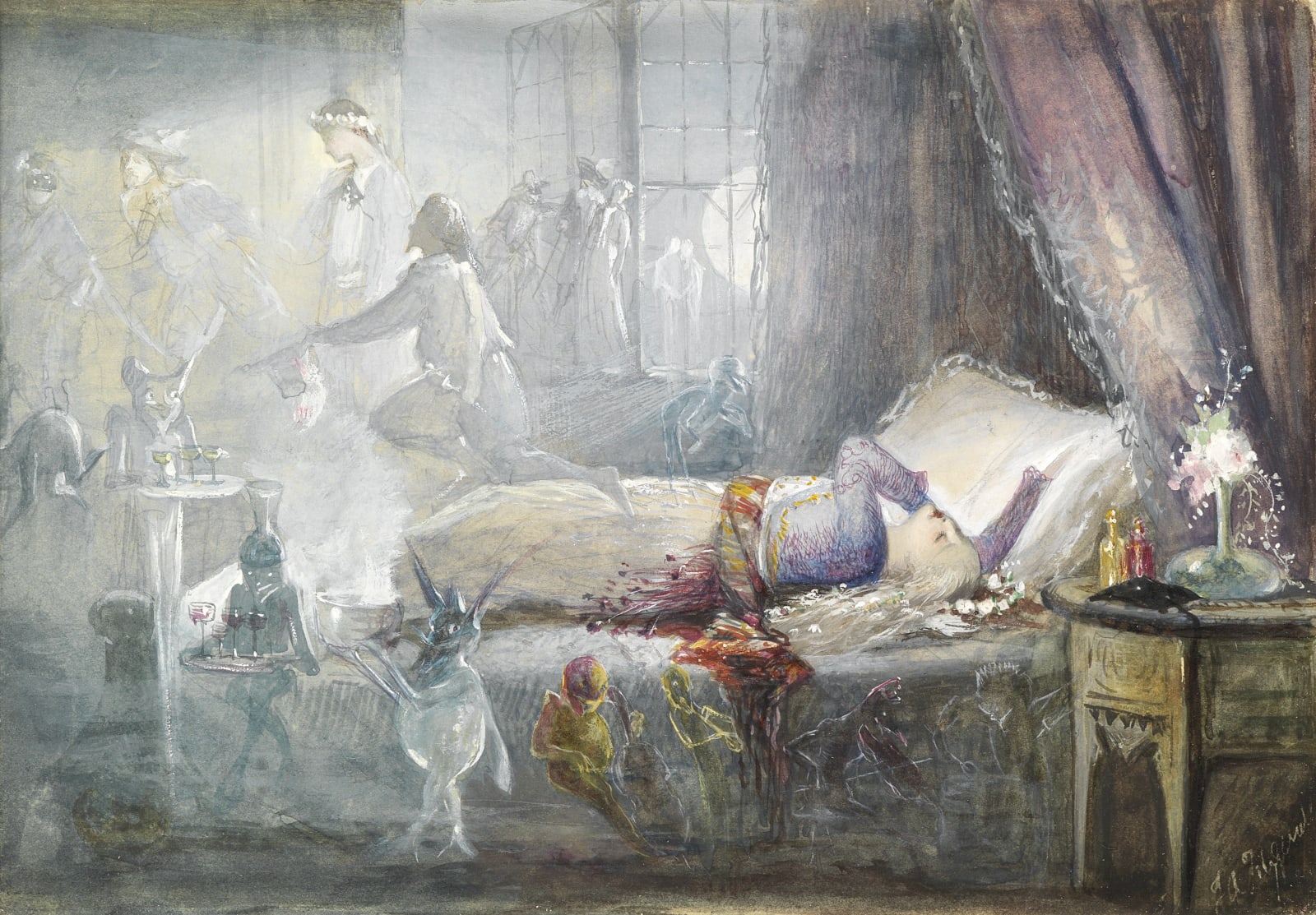-
Artworks
John Anster Fitzgerald (1823-1906)
The NightmareWatercolour with bodycolour; signed6 ¾ x 9 ¾ inchesPOA%3Cdiv%20class%3D%22artist%22%3EJohn%20Anster%20Fitzgerald%20%281823-1906%29%3C/div%3E%3Cdiv%20class%3D%22title_and_year%22%3E%3Cspan%20class%3D%22title_and_year_title%22%3EThe%20Nightmare%3C/span%3E%3C/div%3E%3Cdiv%20class%3D%22medium%22%3EWatercolour%20with%20bodycolour%3B%20signed%3C/div%3E%3Cdiv%20class%3D%22dimensions%22%3E6%20%C2%BE%20x%209%20%C2%BE%20inches%3C/div%3EExhibitions
Anthony d'Offay Fine Art, Dream and Fantasy in English Painting, 1978, no 8
Royal Academy, London,13 November 1997-8 February 1998, Victorian Fairy Painting, no 37
Fitzgerald, the ‘King of the Fairy Painters’, evoked worlds where the fairies seemed very close to us, separated at times only by the veil of sleep. There are overt references to drugs in his ‘dream’ pictures, and nowhere more so than in this picture, dated 1857/8. The red and yellow bottles which stand by the girl’s bed look as though they might contain opiates. The girl writhes on the bed, garlanded with flowers and wrapped in a brilliant red sash that spills to the floor like a haemorrhage, surrounded by eerie creatures of her dream, disporting themselves in the moonlight. Most of the older fairy painters, whether pioneers like Reynolds, Fuseli and Blake or more senior Victorians such as Landseer, David Scott and Noel Paton, derived their subjects from literary sources, notably Shakespeare’s two plays with supernatural themes, A Midsummer Night’s Dream and The Tempest. ‘Fairy’ Fitzgerald occasionally did likewise, but his most characteristic works represent a significant break with this tradition, showing fairy subjects that seem to be of his own invention. Often featuring birds and small animals, as well as fantastically attired denizens of the fairy kingdom, they have a hallucinatory quality, as if they were the products of drug-induced dreams. Harry Furniss remembered him with affection in his reminiscences: ‘He was a picturesque old chap, imbued with the traditions of the transpontine drama [i.e. the Old Vic] ... He had a mobile face, a twinkling eye, and his hair was long, thick and thrown back from his face ... He was known as “Fairy Fitzgerald” from the fact that his work, both in colour and black and white, was devoted to fairy scenes; in fact his life was one long Midsummer Night’s Dream’.
35of 35
The Maas Gallery, 6 Duke Street, St. James's, London, SW1Y 6BN
+44 (0) 20 7930 9511 | mail@maasgallery.com
This website uses cookies
This site uses cookies to help make it more useful to you. Please contact us to find out more about our Cookie Policy.


